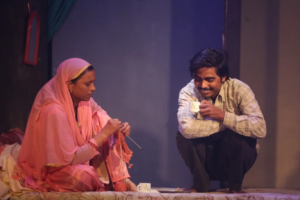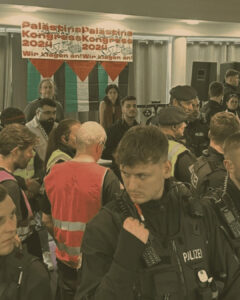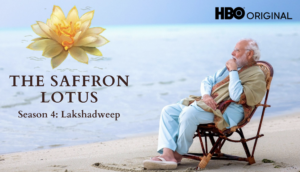
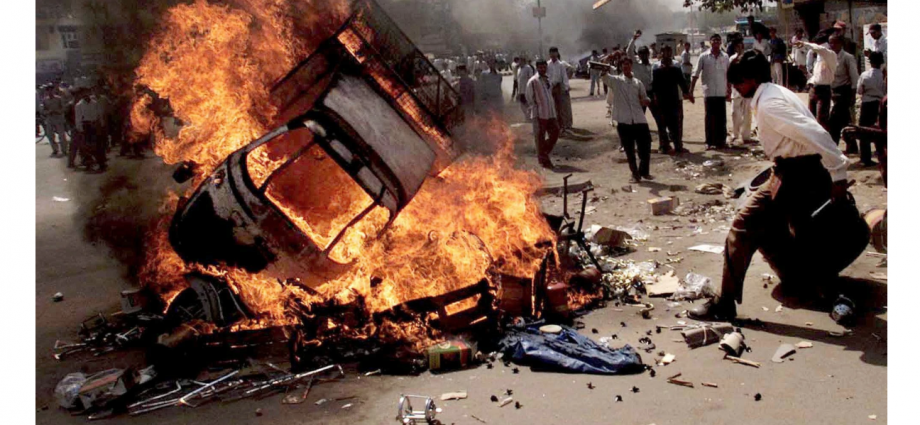
I
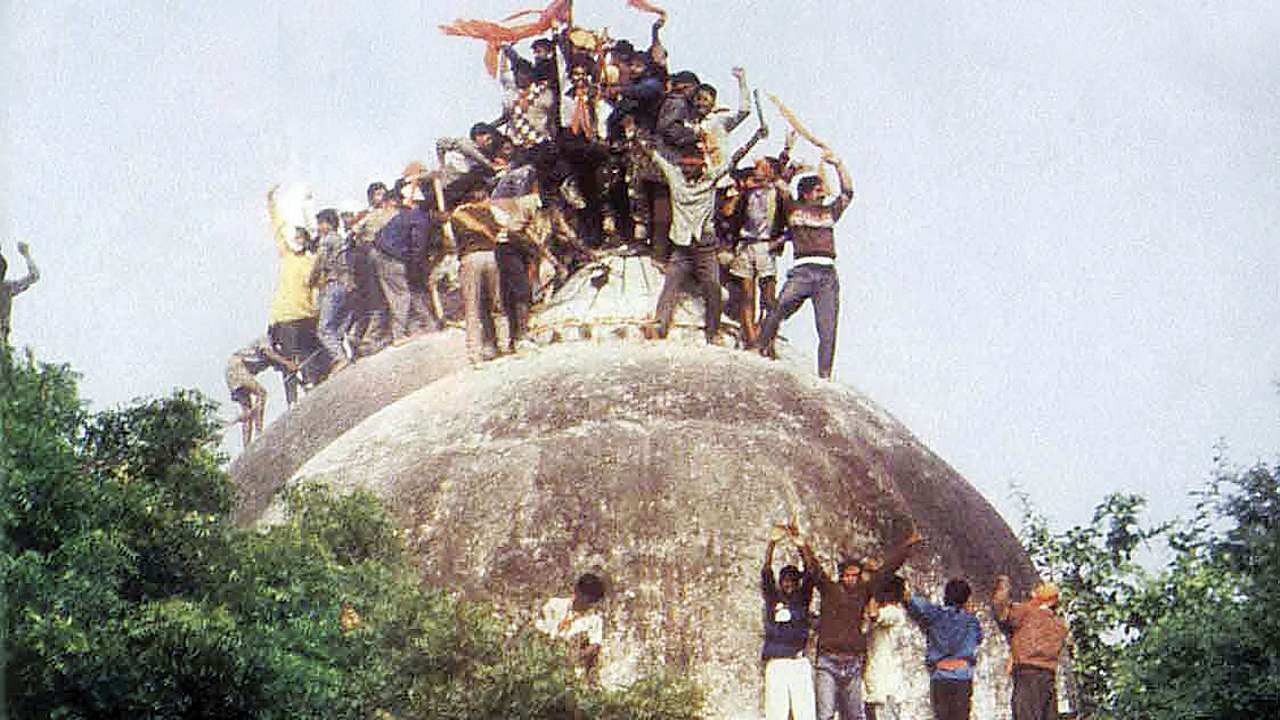
“If you want a picture of the future, imagine a boot stamping on a human face — forever,” wrote George Orwell.
Nineteen Eighty-Four is not only the title of Orwell’s dystopian novel, but also the year that the future changed forever for the Republic of India. The events of that year reverberated around the world once again on 9 November 2019 when the Supreme Court of India issued a judgment in a land dispute.
For decades, India’s courts kicked around various lawsuits filed by plaintiffs asserting their right of ownership to a disputed property in Ayodhya, Uttar Pradesh. The Supreme Court’s final ruling came thirty years after the Hindu nationalist Vishwa Hindu Parishad (VHP) —categorized by the US Central Intelligence Agency as a “religious militant organization” — laid at the site a foundation-stone for a temple to the Hindu deity, Ram. The land belonged, the court ruled, to the infant god Ram.
India’s ruling Bharatiya Janata Party (BJP) apparently entered the temple-building business. Since the infant did not appear in court to take possession of his property, control passed into the hands of the Ram Janmabhoomi Nyas, a VHP-controlled trust. Yet rather than entrusting the Nyas with building a Ram Mandir (temple), the court ordered the Central Government to create a new trust to ensure construction. Thus, India’s ruling Bharatiya Janata Party (BJP) apparently entered the temple-building business.
Because what began in 1984 is of monumental consequence to the present, we must peer back into the past.
In October 1984, as the ruling party in New Delhi organized a massacre of Sikhs that shook the nation to the core, the communal fuse lit by the VHP was already burning.
In April 1984, the Hindu nationalist group launched a campaign which would eventually fundamentally alter the political landscape of India. The VHP set out to gain control of the alleged birthplace of Ram, which they claimed was located in Ayodhya. They wanted to build a Ram Mandir, but faced one key challenge.
The Babri Masjid — a mosque — had stood on that location for nearly 500 years.
Before they could build, the VHP had first to destroy. So they started laying the groundwork. In October 1984, they founded a youth wing called Bajrang Dal (also now categorized by the CIA as a “religious militant organization”) and began drumming up public awareness and support for the campaign by organizing rath yatras (chariot processions) to Ram janmabhoomi (Ram’s birthplace) in Ayodhya.
The god himself was, in the eyes of the courts, laying claim to the site. Meanwhile, Ram Lalla — the infant deity — filed a lawsuit demanding the title to the land where the mosque stood. In July 1989, an Uttar Pradesh High Court recognized Ram Lalla as a legal entity and approved a former judge turned VHP executive to represent the deity. The god himself was, in the eyes of the courts, laying claim to the site.
By October 1989, the movement had generated riots in Meerut, Uttar Pradesh, and Bhagalpur, Bihar, that claimed the lives of well over a thousand people, mostly Muslims.
Then, on 9 November 1989, the VHP escalated the issue by laying a foundation-stone for the proposed temple on a plot of land just opposite the mosque. “To the fundamentalists, the communal bloodbath of the last few months matters little,” wrote journalist Pankaj Pachauri a few weeks later. “Ashok Singhal, general secretary of the Vishwa Hindu Parishad (VHP), makes it clear that no amount of blood-letting will stop his cadres from constructing the Ram temple at the controversial site which includes a 16th century mosque.”
II
The religious demand had already become a political one.
Religion and politics are always a volatile and inevitably explosive mix — this time was no different. The BJP was formed in 1980 by pracharaks (full-time workers) of the Rashtriya Swayamsevak Sangh (RSS) paramilitary as a political arm to advance the RSS’s Hindu supremacist agenda. In June 1989, the BJP formally joined the VHP’s campaign. Religion and politics are always a volatile and inevitably explosive mix — this time was no different.
BJP President L.K. Advani led the charge in 1990.
Setting out from Gujarat on a Ram rath yatra, Advani rode in a minibus mocked up as Ram’s chariot. Heading for Ayodhya, he plotted a circuitous 10,000 kilometer route across the heartland of the Indian subcontinent. Flanked at times by Atal Bihari Vajpayee, a member of parliament, and Narendra Modi, a RSS pracharak, he was trailed by thousands of kar sevaks (activists) from the RSS, VHP, Bajrang Dal, and other groups.
As reported by News18, “Modi was the architect of Advani’s yatra plans.”
The procession halted in multiple cities per day so Advani could deliver rousing speeches. His remarks were apparently over-stimulating — his swelling body of itinerant followers killed scores of Muslims along the way. The day before he was scheduled to enter Uttar Pradesh, Advani was arrested. With the icon of the movement behind bars, anti-Muslim riots erupted in several states, leaving hundreds dead.
In Ayodhya, VHP activists surrounded and surged towards the Babri Masjid, attempting to demolish it as they erected a saffron flag atop its dome. Police intervention left approximately 20 people dead. “This episode reinforced the champion-of-Hinduism image that the BJP had been trying to acquire,” wrote political scientist Christophe Jaffrelot.
It also set the stage for the drama to be fully played out.
In 1991, the BJP campaigned on a pledge to build a Ram Mandir in Ayodhya, calling it “a symbol of the vindication of our cultural heritage and national self-respect.” They fell short nationally but rose to power in Uttar Pradesh. With the state government in the BJP’s hands, the Babri Masjid soon came tumbling down.
On 6 December 1992, hundreds of thousands rallied around the mosque to listen to speeches by the then BJP President Murli Manohar Joshi, MP Uma Bharti and Advani. Sparked by their fiery rhetoric, an activist or two burst past police, climbed up the mosque, and once again planted a saffron flag atop it. A firestorm ensued.
“We saw them break through the first police barrier,” said journalist Mark Tully, who was an eyewitness. “The police did not seem to resist them at all… I saw this sight of a police officer pushing his way through his men so that he could run away faster than the men. And the police just deserted.”
Armed with crowbars, pickaxes, sledgehammers and their bare hands, they tore apart the structure in a matter of hours — subsequently erecting a makeshift temple in its place and installing a statue of Ram Lalla. Given free rein, activists swarmed the mosque. Armed with crowbars, pickaxes, sledgehammers and their bare hands, they tore apart the structure in a matter of hours — subsequently erecting a makeshift temple in its place and installing a statue of Ram Lalla.
Then came the pogroms.
Witnesses told Human Rights Watch (HRW) that the police in Ayodhya were either absent or participating when mobs of hundreds roamed the streets in the pre-dawn hours of 7 December, beating — sometimes lynching — Muslims and burning their homes and businesses. “This was not just some mindless and wanton destruction of human life and property by the kar sevaks in order to sustain the high they had achieved only a few hours ago by razing the Babri Masjid to the ground,” one eyewitness stated. “On the contrary, they worked to a carefully crafted plan.”
The flames of violence fanned across the land and were still burning bright when the new year dawned.
“The violence of the 1992-93 riots following the demolition of the Babri Masjid in Ayodhya on 6 December 1992 exceeded anything India had yet experienced since Partition,” wrote Jaffrelot. Thousands — perhaps up to 3,000 — died. Most were Muslims.
In the wake of the violence, the RSS, VHP and Bajrang Dal — collectively known as the Sangh Parivar (family of organizations) — were all briefly banned, but their willingness to embrace brutality as the means to the end they desired had already set the tone for the anthem the Hindu nationalist movement continues to sing.
For Muslims, the destruction represented what international relations expert Dibyesh Anand called a “poetics of fear” where “minority Muslims have no option but to accept their subjugation or face further violence from the awakened Hindu nation.” For Hindu extremists, however, it was what sociologist Prema Kurien defined as “a watershed event in the history of the Hindu nationalist movement” which “propelled the BJP and its Sangh Parivar affiliates into the limelight.” As HRW reported: “The campaign to build a Ram temple at the site of the Babri Masjid in Ayodhya — which was hugely successful in cultivating a national Hindu vote bank — helped catapult the BJP into power in the early 1990s.”
III
During the 1998 national elections, the BJP declared its commitment to facilitating construction of a “magnificent” Ram Mandir in Ayodhya. The party emerged victorious with Vajpayee as Prime Minister. Advani was tapped not only as deputy prime minister but also as Home Minister (tasked with law and order) while MM Joshi was made minister of Human Resource Development (tasked with education).
All three were RSS men.
Vajpayee was 15 years old when he joined the RSS in 1939, a year before M.S. Golwalkar took over as the second and longest-serving leader of the paramilitary.
It was the same year that Golwalkar published his infamous manifesto, We or Our Nationhood Defined, in which he proclaimed: “Ever since that evil day, when Moslems first landed in Hindustan, right up to the present moment, the Hindu Nation has been gallantly fighting on to shake off the despoilers.” He declared that “we, Hindus, are at war at once with the Moslems” who “take themselves to be the conquering invaders and grasp for power.” The “cause of our ills,” he insisted, was the day that “the Moslems first tread upon this land.” Yet Golwalkar saw a glimmer of hope, claiming that the Hindu “is rousing himself up again and the world has to see the might of the regenerated Hindu Nation strike down the enemy’s hosts with its mighty arm.”
In 1947, as India was about to become independent from the British Empire, Golwalkar visited the maharajah of the Princely State of Jammu and Kashmir to pressure him to expand his militia. His visit came within weeks of a pogrom against Muslims in Jammu in which the maharajah and the RSS collaborated to wipe out tens of thousands — or more. That was the year that Vajpayee became an RSS pracharak.
Despite growing up immersed in the Islamophobia of the RSS, Vajpayee’s administration was generally moderate.
The BJP, unable to win an absolute majority in the 1998 elections, was forced to form a coalition with other parties. Consequently, Jaffrelot explains that it “reverted to its moderate line, discarding the manipulation of religious symbols for political purposes in favor of touting more legitimate issues such as national unity and economic independence.” The party “put on the backburner contentious issues” such as the pledge to construct Ram Mandir — as well as its promise to abolish Article 370 of the Indian Constitution, which provided special status to Jammu and Kashmir.
Everything changed with the advent of Modi.
After assisting Advani’s Ram rath yatra, Modi swiftly advanced up the BJP hierarchy. In 1998, he was rewarded with a national position as organizing secretary of the BJP. By October 2001, political wrangling in Gujarat ended in his appointment as the state’s Chief Minister.
Almost immediately, the Ayodhya conflict engulfed Gujarat. Ten years after the Babri Masjid was destroyed, Modi earned the ignominious appellation of Butcher of Gujarat.
On 27 February 2002, a train filled with VHP activists was returning from Ayodhya to Gujarat when someone pulled the emergency cord. The train stopped, it was allegedly set upon by a mob of Muslims, and several coaches caught fire. Fifty-nine Hindus, mostly women and children, died in the blaze.
Modi responded by immediately (and without evidence) declaring it an act of terrorism perpetrated by the Islamic Republic of Pakistan. In a televised event, the dead were removed from the train as Modi ordered their charred corpses to be transported, uncovered, for 100 kilometers from Godhra to Ahmedabad. The dead were handed over to the VHP, which then paraded the bodies through the streets.
On 28 February, the Sangh Parivar initiated a statewide pogrom against Muslims.
As reported by HRW, the attacks “were planned, well in advance of the Godhra incident, and organized with extensive police participation.” Over three days, the Sangh slaughtered thousands. “The groups most directly responsible for violence against Muslims in Gujarat include the Vishwa Hindu Parishad, the Bajrang Dal, the ruling BJP, and the umbrella organization Rashtriya Swayamsevak Sangh,” reported HRW. Leaflets distributed by the VHP vowed to kill Muslims in the same way as the Babri Masjid was destroyed.
Overseeing it all was Modi, a fact repeatedly revealed by whistleblowers like BJP State Minister Haren Pandya and Deputy Commissioner of Intelligence Sanjiv Bhatt as well as participants in the pogrom who were caught fingering the chief minister on camera in a 2007 sting conducted by an Indian magazine.
VHP chief Ashok Singhal, the architect of the Ram Janmabhoomi movement, reportedly described the Gujarat pogrom as a “successful experiment which will be repeated all over the country.” He lauded entire villages “emptied of Islam” as a “victory for Hindu society.” Then, in 2003, Singhal denounced Prime Minister Vajpayee for supposedly being “the only person in the BJP and Sangh Parivar opposed to the Ram temple movement.”
“The destruction of the Babri Mosque in Ayodhya on December 6, 1992, and the anti-Muslim riots in Gujarat in 2002 are two spectacular events that have been etched into the memory of Hindu nationalists as symbols of the awakened Hindu nation, wrote Anand. “These are held out as the prime illustrations of the Hindu nationalist awakening.” The election of Modi was the culmination of that awakening.
IV
The BJP was voted out of power in 2004 but returned with a roar in 2014 after Modi campaigned on his identity as a Hindutvavadi — an adherent of Hindutva, the religious-nationalist political ideology of Hindu supremacy which guides the Sangh.
Modi’s first term as prime minister was marked by a sharp rise in anti-minority violence but little in terms of advancing the Sangh’s political goals on a national level. Rather, he focused on consolidating his power and stacking his cabinet with RSS men. Within six months of his reelection in May 2019, however, his government achieved the top two most controversial items on the BJP’s religious-nationalist agenda.
In August, the Modi regime scrapped Article 370 and stripped Jammu and Kashmir — the only Muslim majority state in India — of statehood. Boosting its troop presence by tens of thousands, instituting a communications blackout and mass-arresting the entire civil society, the BJP accomplished a full annexation of the previously mostly autonomous region.
Then, three months later, came the Ayodhya verdict.
Welcoming the verdict, RSS chief Mohan Bhagwat declared: “The building of Ram Mandir will end a major issue of friction between Hindus and Muslims.” Top VHP executive Alok Kumar called it “one of the greatest judicial verdicts in the world.” Yet, implying continued friction, Kumar insisted that the “judgement is not the end of the story, it is the beginning.”
Friction remains over the impunity enjoyed by the Sangh after the devastation it wrought in Ayodhya. Advani, Joshi, Bharti, and several others (including Mahant Nrityagopal Das, head of the Ram Janmabhoomi Nyas) are still facing criminal conspiracy charges for the role they played in instigating — perhaps even organizing — the destruction of the Babri Masjid and the pogroms that followed it. Yet no sentence was ever passed on anyone involved in the bloodshed of 1992-1993.
The Supreme Court’s verdict acknowledged that “the destruction of the mosque and the obliteration of the Islamic structure was an egregious violation of the rule of law.”
In 2003, however, journalist Saba Naqvi wrote: “No court can possibly give a verdict that hands over the disputed land to the very people who wantonly destroyed the Babri Masjid.” Yet the Supreme Court’s Ayodhya verdict did just that. The verdict set a precedent for legitimizing a Mafia-style approach. If someone has built a house on land you want, first destroy their house. Then stage a massacre. Then ask the courts for a stamp of approval on the land-ownership demand.
The verdict represents that vision of the future in which a boot is forever stamping on a human face. The verdict represents that vision of the future in which a boot is forever stamping on a human face. “Always there will be the intoxication of power, constantly increasing and constantly growing subtler,” wrote Orwell. “Always, at every moment, there will be the thrill of victory, the sensation of trampling on an enemy who is helpless.” The verdict sanctions those boot-wearers who exult in crushing the downtrodden. It codifies injustice.
Ayodhya is a symbol of rule of lawlessness.


